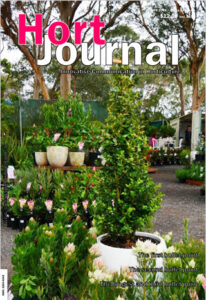
For the love of trees
A recent news item showed a picture of part of a giant Eucalyptus regnans lying on the back of a semi-trailer being carted to a timber mill in Tasmania. This tree was likely to end up as pulp or wood chips. According to Sustainable Timber Tasmania, the tree was felled for safety reasons. Sustainable Timber Tasmania has a Giant Tree Policy that defines giant trees as trees that are at least 85m tall or at least 280 cubic metres estimated stem volume. Based on current known examples, trees of this volume are generally at least 5m in diameter at chest height. This policy aims to preserve these trees and limits logging within a 100m buffer zone. The implication is that if you are not a giant tree now you never will be because you will end up in a timber mill.
We have discussed the value of trees in the landscape and the advantages of a green canopy in urban landscapes, and in the wild, are undisputed. In a recent interview, Dr. Jennifer Sanger from The Tree Projects made the point that the USA, for example, are proud of their giant trees and make a point to promote visits and encourage tourists to see them. The giant redwoods of California Sequoiadendron giganteum can grow to 115m high. Visiting Australian giants is more difficult.
Many would remember the 20-year campaign by the Wilderness Society to protect old growth forests in Tasmania from logging. Protestors set a world record for the five month long, highest tree sit-in to protect the trees from the chainsaws. These old growth forests harbour the tallest flowering plant in the world, Eucalyptus regnans and the world’s tallest blue gum Eucalyptus globulus.
Visiting these sites requires some effort as tourists need to use logging roads that are not sealed. Not easy in a hire car. A travel journalist posted in March 2023 how easy it is to overlook attractions such as the Styx Valley centuries-old forest with trees standing 84m high, and with names such as Gandalf’s Staff and Cave Tree. According to Tourism Tasmania, tourism contributes around $2.59 billion to the Tasmanian economy and surely the notoriety and majesty of these trees is worth promoting.
The woodland trust in the UK has a Tree of The Year competition where people vote for their favourite tree. The Woodland Trust is the UK’s largest woodland conservation charity, responsible for planting 50 million trees over 50 years. The idea of promoting the popularity of a particular tree by soliciting votes appeals to me. While some states in Australia have trees marked as significant, the responsibility largely falls to local council areas. The city of Sydney, for example, has a register of 2,674 significant trees. In 2022 the ABC Catalyst program ran an online poll to find Australia’s favourite tree, the winner being the River Red Gum Eucalyptus camaldulensis. It also had Acacia peuce as Australia’s loneliest tree, growing in the Simpson Desert.
In 1985 a landholder discovered another species of gum tree and since then extensive searching has revealed the existence of just six trees from four sites. Not only rare but estimates put their age anywhere from 3000 to 13,000 years. Named Mongarlowe Mallee (Eucalyptus recurve) perhaps this should be Australia’s loneliest tree.
Enjoy the read
Karen Smith and your Hort Journal Team
